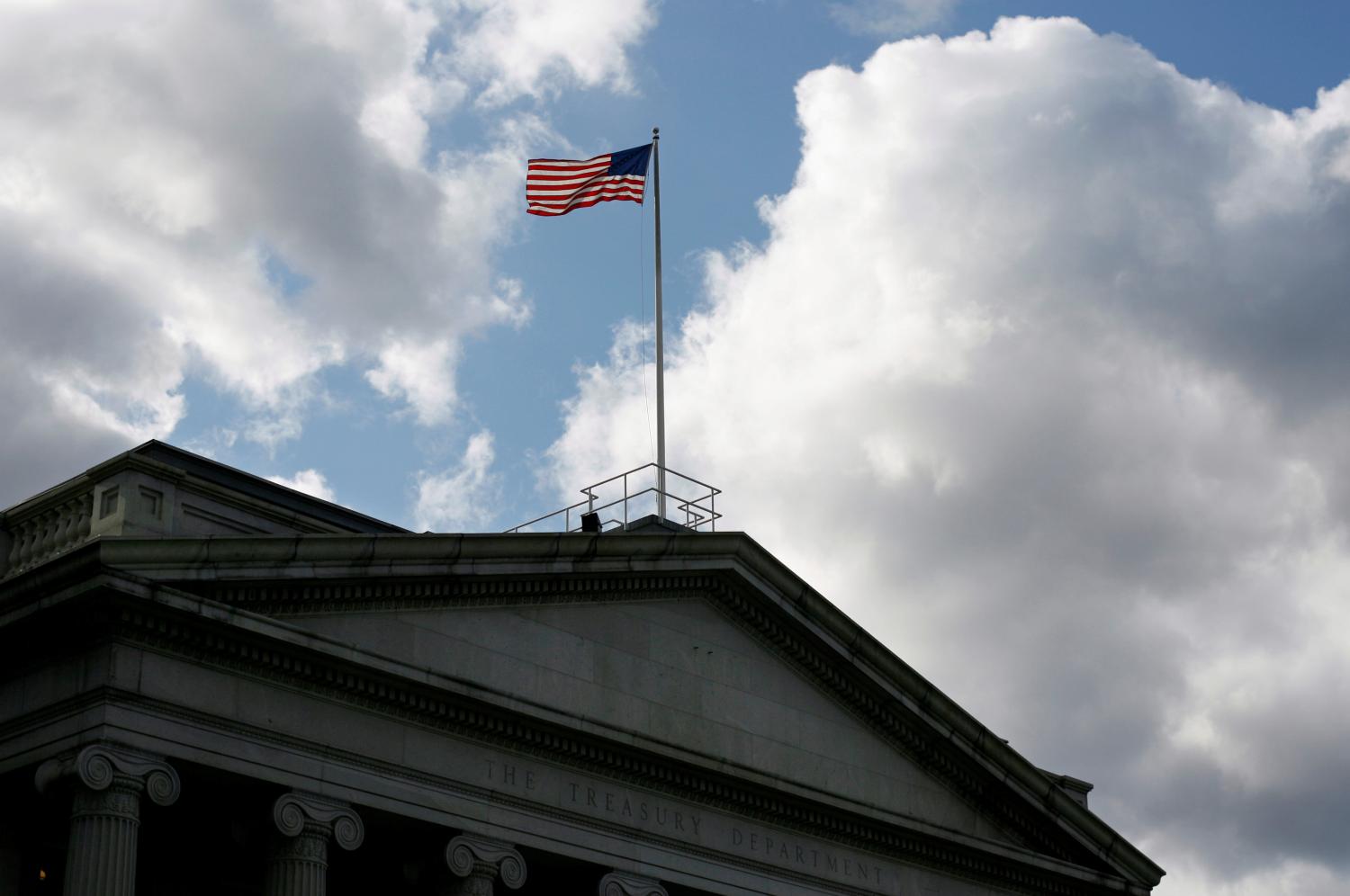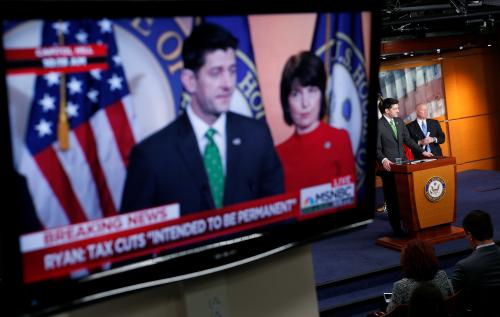This article originally appeared in Tax Notes on July 30, 2018.
In “The federal budget outlook: We are not winning” (PDF), Alan Auerbach, William Gale, and Aaron Krupkin look at the U.S. fiscal situation. They find that, on balance, the medium-term (10-year) outlook has worsened over the past year. The 2017 tax cut, the 2018 spending deals, and anticipated higher interest rates raise projected deficits and debt, while expectations of a stronger economy and lower healthcare spending work in the opposite direction. The net effect is that the CBO now projects a debt-to-GDP ratio of 94.5 percent in 2027 under current law, compared to a projection of 91.2 percent in June 2017.1
But the fiscal outlook has deteriorated significantly more than the comparison of 2027 debt-to-GDP figures suggests.
First, in terms of the government’s underlying fiscal stance, a strong economy makes the projections of large deficits more worrisome. The CBO projects that cumulative actual and potential GDP will be equal, on average, over the 2018-2028 period. The strong economic performance is in large part attributable to the implementation of the 2017 tax legislation and the resulting fiscal stimulus. But it also means that the higher projected deficits and debt are essentially full-employment deficits. If the economy falls into recession, the medium-term fiscal outlook is likely to look significantly worse.
Second, under a “current policy” scenario, the problem is considerably larger, as the CBO acknowledges. Whereas current-law projections examine the impact of Congress essentially making no further changes over the projection period, current-policy projections estimate the impact of what might be termed business-as-usual assumptions regarding tax and spending choices—in particular, that policymakers routinely extend temporary provisions.2 Under current law, the CBO projects a debt-to-GDP ratio of 96.2 percent by 2028.3 Under current policy, we project a debt-to-GDP ratio of 106.3 percent in that year, which would be the highest ratio in U.S. history, just surpassing the previous high from 1946, right after the close of World War II.
Third, the situation only gets worse after 2028. The fiscal gap measures the tax and spending changes needed to bring the debt-to-GDP ratio to a specified level in a specified year. For example, under current policy, we find that to ensure the debt-to-GDP ratio 30 years from now does not exceed the current level would require a combination of immediate and permanent spending cuts or tax increases totaling 4.2 percent of GDP. This represents about a 22 percent cut in noninterest spending or a 25 percent increase in tax revenue relative to current levels. To put this in perspective, the 2017 tax cuts and 2018 spending bill will raise the deficit by less than 2 percent of GDP in 2018. The required adjustments to keep debt at its current ratio to GDP in 2048 are more than twice as big and in the opposite direction. The longer policymakers wait to institute changes, the larger those adjustments would have to be to hit a given debt target in a given year. Projecting beyond 2048 also worsens the picture because the fiscal outlook under current policy continues to deteriorate after that date.
Sustained federal deficits and rising federal debt, used to finance consumption or transfer payments, will crowd out future investment; reduce prospects for economic growth; make it more difficult to conduct routine policy, address major new priorities, or deal with the next recession or emergencies; and impose substantial burdens on future generations. The nation’s debt-to-GDP ratio rose by about 35 percentage points during and in the aftermath of the most recent recession. It is hard to believe that policymakers or financial markets would look kindly on the United States’ needing to borrow another 35 percent of GDP when the next recession hits.
Read the full report here.
-
Footnotes
- CBO 2017, 2018b.
- The CBO’s current-law projections assume that some actions are taken: the debt ceiling is raised, existing programs are reauthorized, and Social Security and Medicare programs pay scheduled benefits—even if their respective trust funds are depleted.
- CBO 2018b.
The Brookings Institution is committed to quality, independence, and impact.
We are supported by a diverse array of funders. In line with our values and policies, each Brookings publication represents the sole views of its author(s).








